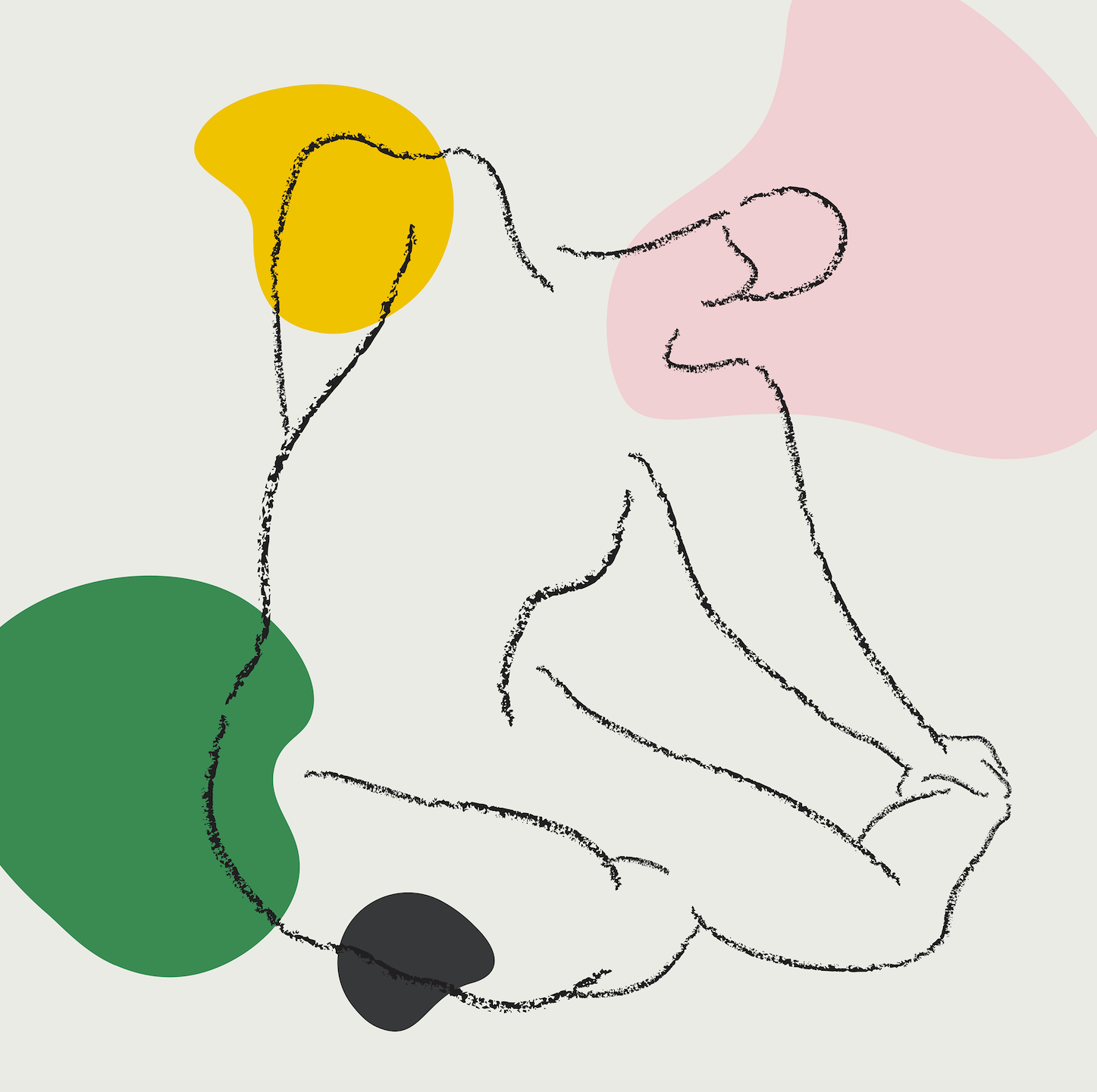Endometriosis occurs when tissue that’s very similar to the lining of the uterus (endometrium) starts to grow outside the uterus and can bleed throughout the menstrual cycle.
If the blood is not able to drain away, it can result in inflammation and the development of cysts and scar tissue such as adhesions and fibrosis, called endometrial foci. While these growths are generally considered to be benign, they can metastasise and lead to permanent damage [1].
Endometriosis is often referred to as the “chameleon of gynecology” because the severity of the condition often does not correlate with the degree of discomfort [2]. In some cases, endometriosis can cause debilitating pain and require a surgical procedure. In other cases, it can be mild and treated with steroids, antiinflammatories and painkillers.
Who does endometriosis affect?
Endometriosis is considered to be related to hormone levels and typically occurs in women ages 20 to 40 years old, though it is more common in women in their 30s and 40s. Symptoms usually set in as estrogen levels drop toward menopause.
There isn’t a simple test to diagnose the disease and it usually requires an abdominal examination called a laparoscopy. It’s estimated that 10% of women are affected by endometriosis. In about half of those cases, the lesions and foci are inactive and cause few problems [2]. However, in the other half of cases, the lesions could be responsible for 40-60% of the infertility that these patients face.
That said, endometriosis is still underrepresented in much modern scientific research. On average, it takes 6 years for doctors in Germany and 7.5 years for doctors in the UK to diagnose the disease after the onset of symptoms [3]. It doesn’t help matters that women are often taught that severe pain is a part of menstruation, rather than a leading symptom of endometriosis, or that women’s pain isn’t taken as seriously as men’s pain, a concept often referred to as the “gender pain gap.”
Which parts of the body does endometriosis affect?
Uterine tissue that develops from endometriosis is mostly located around the lower abdomen and pelvis. Yet it can affect entirely different organs as well, albeit less frequently.
It’s difficult to classify the different types of endometriosis, since there are many ways it can affect the body. These are the most common ways it’s been cited [4]:
- Superficial endometriosis: found mainly on the pelvic peritoneum, the thin membrane that lines the abdomen and pelvis.
- Cystic ovarian endometriosis (endometrioma): found in the ovaries, also referred to as “chocolate cysts.”
- Deep endometriosis: found in the recto-vaginal septum, bladder and bowel and called “frozen pelvis.” Occurs in 1-5% of people with endometriosis.
In more severe cases, adhesions or damage to the fallopian tubes and ovaries can lead to infertility.
Endometriosis — The symptoms
If the endometrial lesions are active, the condition can cause the following symptoms [5]:
- Pain of varying severity in the abdomen and back before and during menstruation
- Very heavy and/or irregular menstrual flow
- Pain during or after intercourse
- Pain that radiates into the legs
- Pain during ovulation
- Pain during bowel movements
- Cramps and pain during urination or bowel movements
The search for the causes
It’s not yet been determined what causes endometriosis. There are a variety of possible explanations, yet so far none of them has been scientifically proven.
One of the theories is that the condition results from so-called retrograde or "backward" menstruation, in which menstrual blood containing endometrial cells flows back into the abdomen’s fallopian tubes instead of out through the body — even when the body is not menstruating. This likely happens to 9 out of 10 women at any given point in the cycle anyway, yet it usually does not lead to any issues [6] as the body can break down this tissue easily. However, a misdirected response from the immune system could lead the cells to remain in the body and become inflamed [8].
The risk of developing endometriosis seems to increase as bodies menstruate more frequently or with a heavier flow [6]. Women with shorter cycles (27 days or fewer) as well as women whose periods last more than seven days might be more likely to get endometriosis. The condition is also often generic, as women with family members who have suffered from the condition are also more likely to develop it.
How can endometriosis be treated?
Unfortunately, while the condition can be treated, it cannot be cured. Treatments range from painkillers and hormone therapy to surgical procedures in which the foci are removed via laparoscopy. Sometimes the condition can reoccur, as in new lesions can appear where previous ones have been removed.
While it’s a far cry from a cure, methods to alleviate the pain and improve quality of life can include yoga and breathing exercises [8]. One study also suggests that progressive muscle relaxation exercises may be beneficial as an adjunct to hormone therapy [9].
You are not alone
If you believe you might have endometriosis, you should definitely visit your doctor. Take extra good care of yourself and listen to your body. If you would like to learn more about the condition, you can visit the National Health Service’s web page on endometriosis and Endometriosis UK for more resources, as well as the World Endometriosis Foundation.
Celebrities who have come forward with their stories of endometriosis include Grammy-winning singer Cyndi Lauper, famed food writer Padma Lakshmi, singer Halsey, actor and TV host Whoopi Goldberg, Spice Girl Emma Bunton, actor Susan Sarandon and the creator and star of the HBO series Girls, Lena Dunham. [10]
To bring more attention to the disease, the first worldwide EndoMarch was held in 2014 and has been celebrated each March ever since. As public awareness about the condition grows, hopefully more women will come forward and report their condition — so that endometriosis research and treatment options will continue to grow as well.
Sources:
[1] What is endometriosis?
https://www.nhs.uk/conditions/endometriosis/#:~:text=Endometriosis%20is%20a%20condition%20where,are%20treatments%20that%20can%20help.
[2] Endometriosis: a persistent female condition (German)
https://www.pharmazeutische-zeitung.de/ausgabe-182007/endometriose-ein-hartnaeckiges-frauenleiden /
[3] Diagnosis and endometriosis therapy (German)
https://www.pelvicpain.org.uk/wp-content/uploads/2018/03/Endometriosis_guidelines_Germany.pdf
Endometriosis: The condition that can take over seven years to diagnose https://www.bbc.com/news/av/stories-49925760
[4] Endometriosis: a persistent and elusive disease (German)
https: // www .deutsche-apotheker-zeitung.de / daz-az / 2013 / daz-34-2013 / endometriose
[5] ENDOMETRIOSIS - THE (SCARY) SECRET DISEASE (German)
https://www.bvf.de/aktuelles/pressemitteilungen/meldung/ news / endometriose-die-un-secret-disease /
[6] ENDOMETRIOSIS: CAUSES AND RISK FACTORS (German)
https://www.frauenaerzte-im-netz.de/diseases/endometriose/ursachen-und-risikofaktoren/
[7] Immunobiology of endometriosis
https://pubmed.ncbi.nlm.nih.gov/11163805/
[8] A Qualitative Study on the Practice of Yoga for Women with Pain-Associated Endometriosis
https://www.researchgate.net/profile/Luis-Bahamondes/publication/310628494_The_Practice_of_Hatha_Yoga_for_the_Treatment_of_Pain_Associated_with_Endometriosis/links/5e5f9ae0299bf1bdb851470f/The-Practice-of-Hatha-Yoga-for-the-Treatment-of-Pain-Associated-with-Endometriosis.pdf
[9] Effects of progressive muscular relaxation training on anxiety, depression and quality of life of endometriosis patients under gonadotropin-releasing hormone agonist therapy
https://www.researchgate.net/publication/223135838_Effects_of_progressive_muscular_relaxation_training_on_anxiety_depression_and_quality_of_life_of_endometriosis_patients_international_gonadothorosis_patients_under_gon
[10] Celebrities with Endometriosis https://www.webmd.com/women/endometriosis/ss/slideshow-celebs-endometriosis

